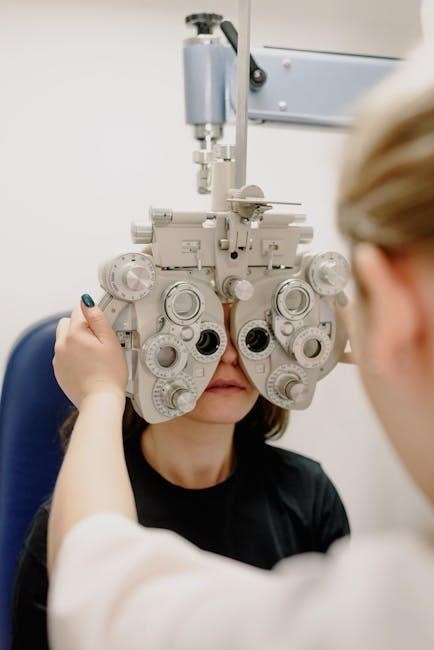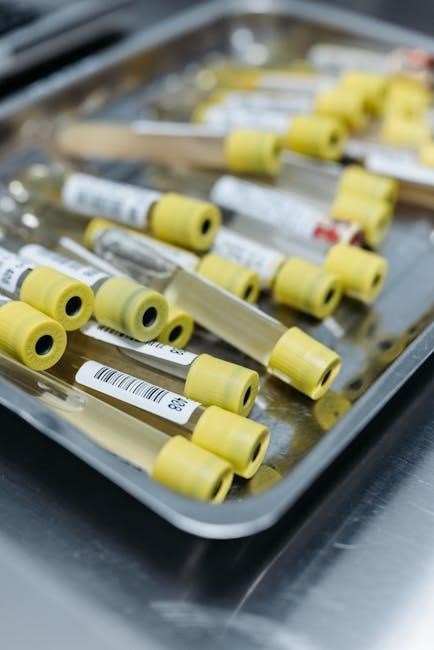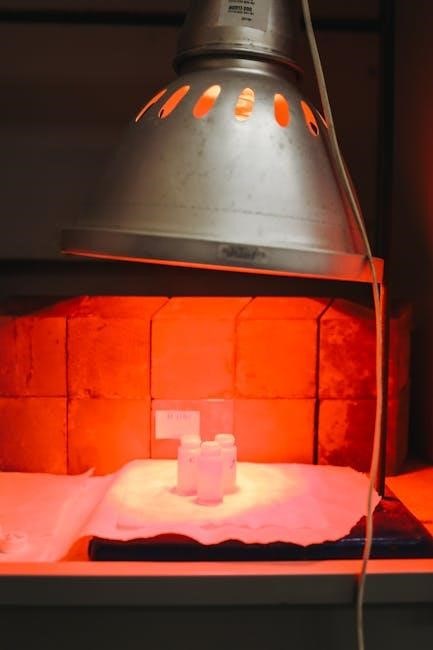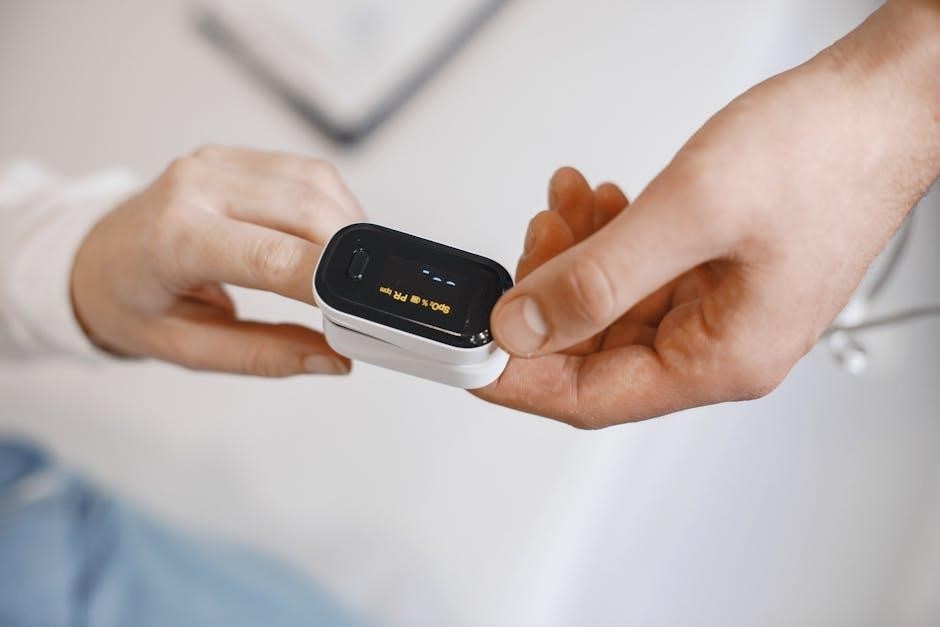The nitrogen leak test procedure ensures system integrity by detecting leaks using pressurized nitrogen‚ providing a safe and effective method for automotive and industrial applications.
Importance
Identifying leaks early ensures safety‚ reduces costs‚ and prevents system failures. Nitrogen leak testing is crucial for verifying system integrity‚ especially in automotive and industrial applications. It helps detect potential issues before operational use‚ ensuring compliance with safety standards and preventing contamination. Regular testing maintains reliability and optimizes performance.
Overview
The nitrogen leak test procedure involves pressurizing a system with nitrogen to identify leaks. It includes preliminary checks‚ pressure application‚ and leak detection using specialized tools. The process ensures system reliability and safety‚ making it a critical step in automotive A/C and industrial piping systems. Proper execution prevents failures and ensures optimal performance.
Procedure
The nitrogen leak test procedure involves pressurizing the system with nitrogen gas to detect leaks. Start by connecting the nitrogen cylinder and regulator‚ then pressurize the system to the recommended level. Conduct a visual inspection and use leak detection tools to identify any pressure drops or gas escape. Ensure all connections and seals are secure before finalizing the test.

Safety
Wear safety glasses and gloves when handling nitrogen cylinders and equipment. Ensure proper ventilation to prevent oxygen displacement; Secure the nitrogen cylinder upright and follow manufacturer guidelines for regulator and hose connections. Be cautious of high-pressure gas‚ which can cause injury or system damage. Always conduct tests in a well-ventilated area and ensure the cylinder is stored safely after use.

Tools
Essential tools include a nitrogen cylinder‚ regulator‚ pressure gauge‚ charging hoses‚ and leak testing gauges. Specialized nitrogen leak test kits are also available. A manifold gauge and electronic leak detectors enhance accuracy. Ensure all equipment is compatible with nitrogen and properly connected to maintain system integrity during testing.

Detection
Detection involves monitoring pressure changes and using electronic leak detectors sensitive to helium or hydrogen traces mixed with nitrogen. Audible pressure loss and gauge drops indicate leaks. Helium sensing instruments enhance accuracy‚ while full line walks ensure thorough inspection of potential leak paths‚ such as flanges and seals.
The nitrogen leak test procedure is a reliable method for ensuring system integrity by detecting leaks before charging. Using nitrogen under pressure‚ it safely identifies leaks without refrigerants. Proper procedures and safety measures ensure accurate results‚ making it essential for maintaining system reliability and performance in automotive and industrial applications.
The nitrogen leak test procedure ensures system integrity by detecting leaks using pressurized nitrogen‚ providing a safe and effective method for automotive and industrial applications.
Nitrogen leak testing is crucial for ensuring system integrity‚ safety‚ and reliability. It detects even minor leaks‚ preventing refrigerant loss and potential environmental impact. This method is cost-effective and ensures compliance with industry standards‚ making it essential for automotive and industrial applications. Regular testing enhances system performance and longevity‚ avoiding costly repairs.
The nitrogen leak test procedure involves pressurizing a system with nitrogen gas to detect leaks. It is a non-destructive method used to ensure the integrity of automotive and industrial systems. The process includes pressurization‚ inspection‚ and leak detection using specialized tools. This test is essential for identifying potential failures before system operation‚ ensuring safety and efficiency.
The nitrogen leak test procedure involves pressurizing the system with nitrogen gas‚ monitoring pressure levels‚ and using a leak detector to identify any leaks or drops.
Preparation
Prepare the system by connecting the nitrogen cylinder and regulator‚ ensuring all valves are closed. Conduct a preliminary check for visible leaks and proper connections. Purge the system to remove contaminants and ensure cleanliness. Set the regulator to the required pressure and verify the system’s readiness for pressurization and leak detection.
Pressurization
Gradually pressurize the system with nitrogen to the specified test pressure‚ monitoring for stability. Listen for audible leaks and watch gauges for pressure drops. Increase pressure in controlled increments‚ ensuring no sudden surges. Maintain the test pressure to allow accurate leak detection and system integrity assessment.

Inspection
Visually examine all connections‚ flanges‚ and gaskets for signs of leaks. Use electronic leak detectors to identify even minor leaks. Listen for hissing sounds and monitor pressure gauges for drops. Ensure all components are inspected systematically. Document any leaks or irregularities for corrective action. This step ensures system integrity and reliability before final approval.
Safety is crucial during nitrogen leak testing. Wear protective gear‚ including safety glasses and gloves. Ensure the nitrogen cylinder is securely connected and positioned upright. Use a regulator to control pressure and avoid rapid releases. Follow all safety guidelines to prevent accidents. Proper ventilation is essential to avoid nitrogen displacement of oxygen in the air.
Essential tools include a nitrogen cylinder‚ regulator‚ pressure gauge‚ and electronic leak detector. Specialized kits may also be used for precise leak detection and system testing.
Equipment
The nitrogen leak test requires a nitrogen cylinder‚ regulator‚ and pressure gauge to control pressurization. An electronic leak detector‚ charging hoses‚ and manifold gauges are essential for accurate detection. Safety gear like gloves and safety glasses is mandatory. Specialized kits may include additional components for precise testing and system evaluation.
Usage
The equipment is used to pressurize systems with nitrogen‚ enabling leak detection. Connect the regulator to the system‚ apply pressure‚ and monitor for drops using gauges. Detect leaks with electronic sensors or audible methods. Ensure all connections are secure to maintain safety and accuracy during testing procedures.
The nitrogen leak test procedure ensures system integrity by detecting leaks using pressurized nitrogen‚ ensuring safety‚ efficiency‚ and accuracy in automotive and industrial applications effectively.
The nitrogen leak test is crucial for ensuring system integrity‚ detecting even minor leaks‚ and preventing refrigerant loss or contamination. It guarantees reliability‚ safety‚ and compliance with industry standards‚ making it essential for automotive and industrial applications. Regular testing helps maintain efficiency and avoids costly repairs by identifying issues early.
The nitrogen leak test procedure involves pressurizing a system with nitrogen to identify leaks‚ ensuring operational safety and efficiency. It typically includes pressurization‚ inspection‚ and detection steps‚ utilizing specialized tools like regulators and gauges. This method is widely used in automotive and industrial settings to verify system integrity before charging with refrigerants or other gases‚ ensuring reliability and compliance with standards while minimizing potential risks and downtime through early detection of issues. By employing nitrogen‚ a non-reactive and safe gas‚ the procedure ensures accurate and consistent results‚ making it a preferred choice for maintenance and quality control processes across various industries.
The procedure involves pressurizing the system with nitrogen‚ followed by leak detection using electronic detectors‚ ensuring all connections and seals are secure before operational use.
Steps
The nitrogen leak test begins with system pressurization‚ followed by electronic leak detection. Connections and hoses are inspected for integrity. If leaks are detected‚ the system is isolated for repair. Pressure is monitored to ensure stability‚ and final checks confirm the absence of leakage before operational use.
Always wear safety glasses and gloves during nitrogen leak testing. Ensure the nitrogen cylinder is securely fastened to prevent tipping. Avoid releasing nitrogen gas in confined spaces‚ as it can displace oxygen. Follow all safety protocols and guidelines to minimize risks associated with high-pressure systems and gas handling.
Essential tools include a nitrogen regulator‚ pressure gauge‚ manifold gauge‚ and electronic leak detector. Additional equipment may involve charging hoses and a leak testing gauge assembly.
The necessary equipment includes a nitrogen cylinder‚ regulator‚ pressure gauge‚ manifold gauge‚ and electronic leak detector. Additional tools may involve charging hoses‚ a leak testing gauge assembly‚ and safety gear like gloves and safety glasses to ensure safe operation.
The equipment is used to pressurize the system with nitrogen‚ detecting leaks through pressure loss or electronic sensors. The regulator controls gas flow‚ while gauges monitor pressure levels. Leak detectors‚ sensitive to helium or hydrogen traces‚ identify potential leaks efficiently‚ ensuring system integrity before operational use.
Nitrogen leak testing ensures system integrity by detecting leaks using pressurized nitrogen‚ providing a reliable method for verifying seal tightness in automotive and industrial applications effectively.
Nitrogen leak testing is crucial for ensuring system integrity by detecting even minor leaks‚ preventing contamination‚ and ensuring operational efficiency. It helps maintain safety‚ reduces potential failures‚ and verifies seal tightness in automotive and industrial applications. This method is cost-effective and provides reliable results‚ making it essential for pre-charging inspections and compliance with safety standards.
The nitrogen leak test is a systematic process for verifying system integrity by pressurizing with nitrogen gas to detect leaks through pressure changes or electronic detection methods. Widely used in automotive and industrial applications‚ this method ensures reliable and safe identification of potential breaches before operational use.
The nitrogen leak test involves pressurizing the system with nitrogen gas‚ monitoring for pressure drops‚ and using leak detectors to identify potential breaches efficiently and accurately.
Secure the nitrogen cylinder‚ connect the regulator‚ and set the desired pressure. Ensure the system is clean and free from contaminants. Check all connections for tightness and proper functionality. Verify the system is ready for pressurization by ensuring all components are properly installed and aligned. Conduct a visual inspection to confirm readiness for the test.